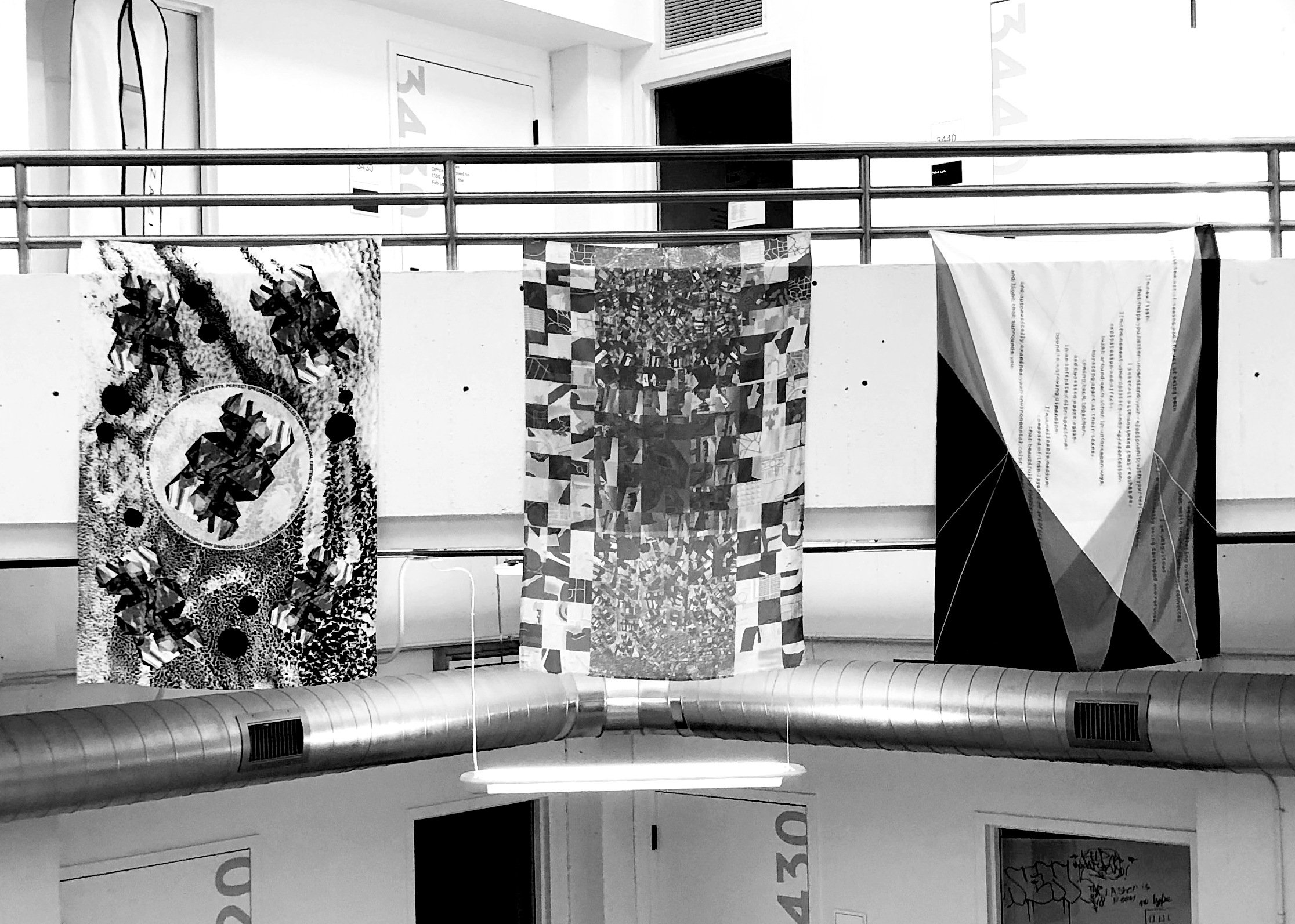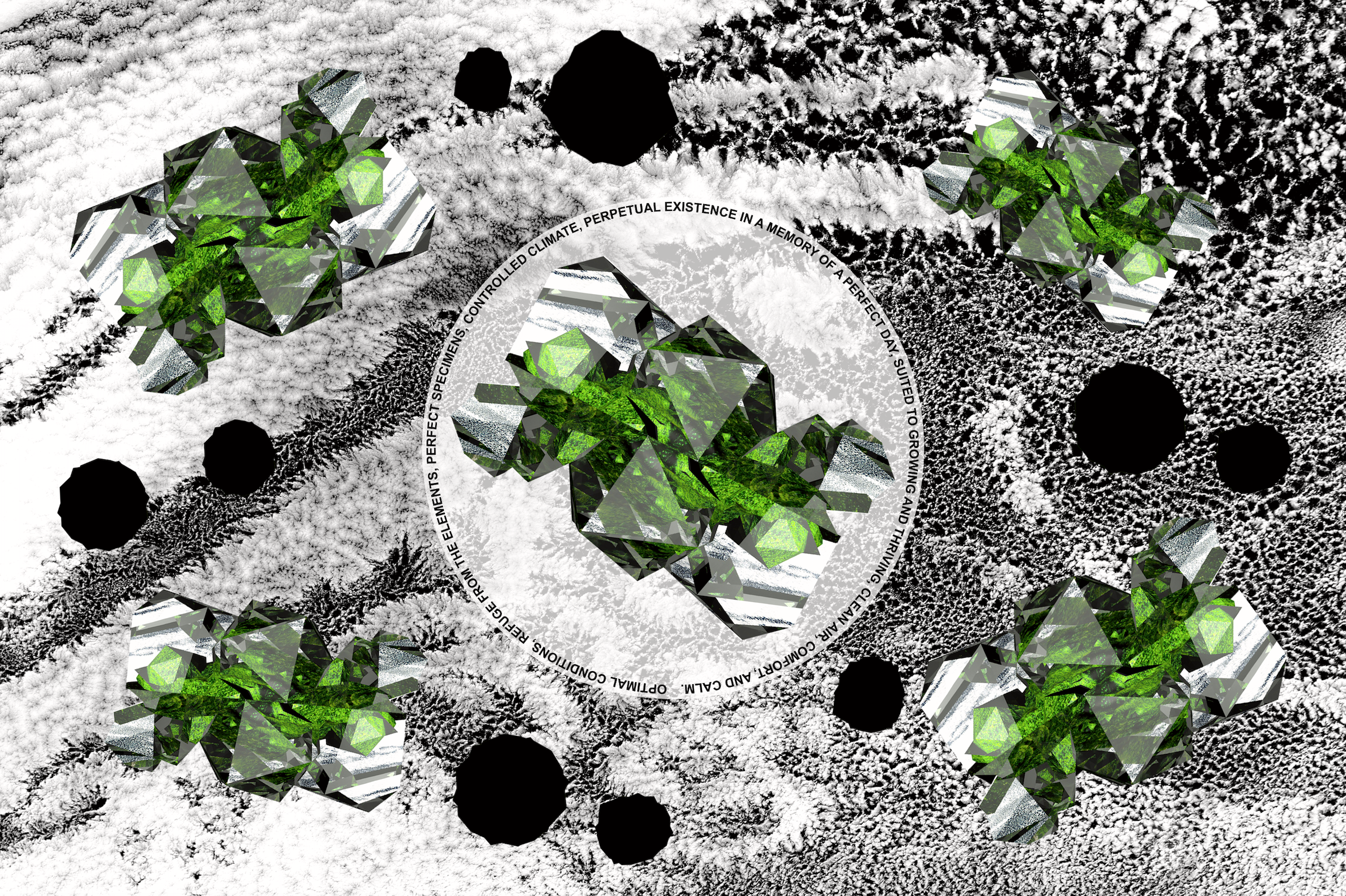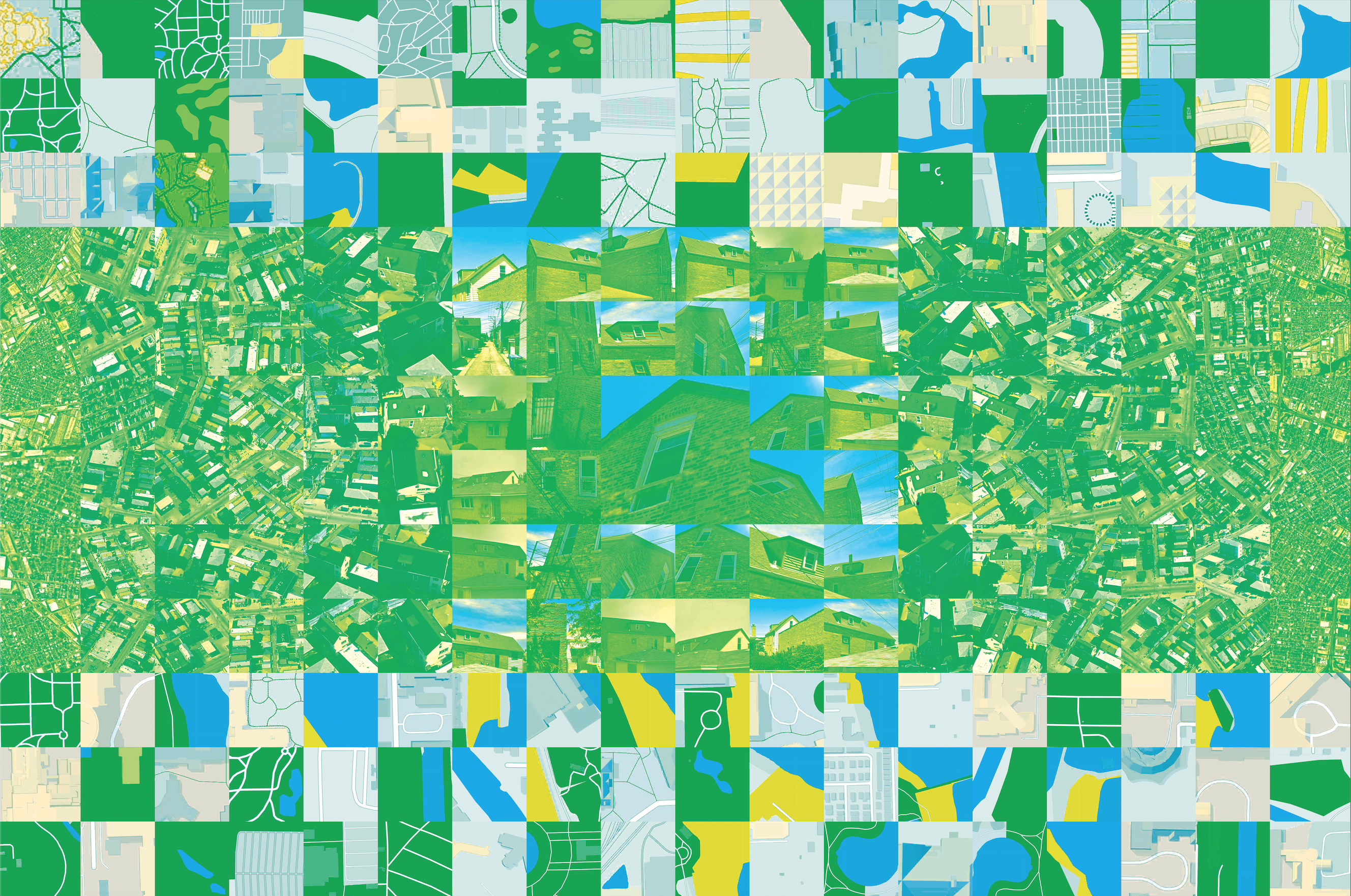Heterotopias
Dystopian fiction writing and collaborative design practices produced a set of three flags representing complex spaces and entities, driven by Foucault’s concept of a Heterotopia, or a “world within a world.”
 Installation of three satin flags. 3’ x 5’, 2019.
Installation of three satin flags. 3’ x 5’, 2019.
Heterotopia. satin flag. 3’ x 5’, 2019
Exploring environmental problems through dystopian fiction, I envisioned a world where conditions including climate change and contamination of toxic particles have worsened to the point that the natural world has become inhospitable to human life. To highlight the “not in my backyard” and “every man for himself” instincts that drive systemic environmental injustice, I visualized a dystopic world where people construct their own self-contained environments around their homes, which take on forms that resemble greenhouses
For the greenery, I used two contrasting images, a lettuce field, a ubiquitous crop cultivated for food, and kudzu, an invasive plant which as taken over areas of the South, suffocating, depriving resources, covering, and killing that which grew before. I introduced my own hand-drawn patterns to the 3d software, which I used to construct landscape forms and shapes to represent toxic clouds and landfill waste.
Requirement: design using Cinema 4D

Dark Matter. satin flag. 3’ x 5’, 2019,
The second flag is made in response to a piece of writing based on an imagined “heterotopia.” The writing consisted of ten statements or parameters from the perspective of a Dark Matter entity that would exist in that world. The Dark Matter would be an invisible but overarching force in the context of the fictitious world. I was working from a piece of writing based upon the space of a social media platform, such as Facebook. Working from the written statements, I envisioned the Dark Matter as an omnipresent corporate entity with total control over our lives. Some of the written statements include “I am above all laws, I watch everything that you do, I control every action that you take, and I will make you question reality.” The other condition was to use a Google App as our only design tool. Considering the entity, along with the idea of corporate surveillance, I decided to use Google Maps, Street-view and Google Earth to produce my flag.
In a composition of 213 different screen-shots, I have created a disorienting patchwork of map segments, taken from my real surrounding location, and then satellite images from a distant aerial view, zooming in on my own apartment building, to a closer street level, and a disturbing final zoom onto my gate, fire escape, and window. The green-saturated image hints at the color of night-vision imagery, while remaining ambiguous. This could really be anywhere or anytime.
Requirement: design using a Google App

Cyborg. satin flag. 3’ x 5’, 2019.
The last flag is representative of a cyborg entity, a type of hybrid, intermediary form, in the context of a fictional world. In this collaborative exercise, I worked from a piece of writing which described a cyborg entity in the form of a screen, serving as an mediating force between human and computer. A requirement was to design using an altered typeface, created with Glyphs App.
For the typeface, I chose OCR-A, an optical character recognition typeface designed to be scanned by machines as well as read and understood by humans. Using the Glyphs App, I altered a number of characters to introduce angular, open spaces in the letterforms inspired by prisms. The writing also references the screen as emitting bright light, and bursting apart in an infinite color spectrum. Inspired by RGB light diagrams (where colored lights combine to form white light) and prisms (where white light breaks apart into a spectrum), I composed my third flag. The yellow lines are the reflected angles of the colored shapes, which I used as a structure to set the text in my altered-OCR typeface.
Requirement: alter existing typeface using Glyphs App